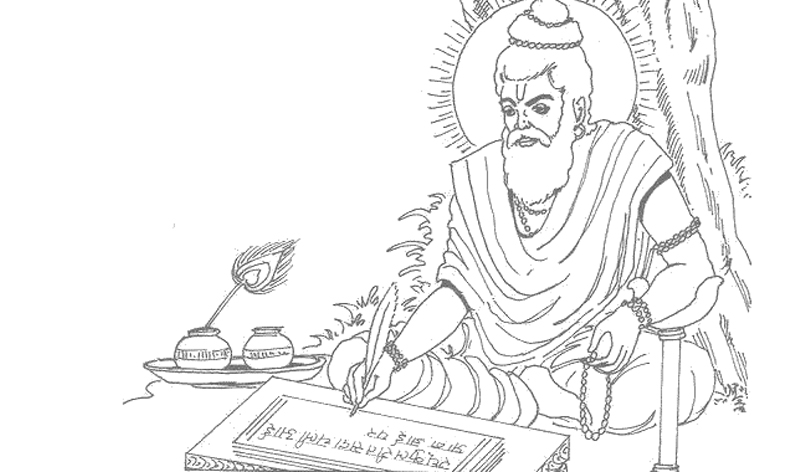You must learn to endure fleeting things they come and go!
Vedic References
The four Veda s signify the philosophy of the eternity and absolute complementary role of Gayatri and Yagnyam in the divine creation.
Atharva veda deals with sound therapy aspects of Mantras for the treatment of the ailing human system at the physical, psycological and spiritual levels.

The Sama veda focuses on the musical chanting patterns of the Mantras and the subtle form of Yagnyam by defining the latter as the process of mental oblation on the surface of internal emotions through the cosmic radiation of the omnipresent subtle energy of sound. The Yajur veda contains the knowledge of principles and methods of performing Yagnyam s as Spiritual and Scientific experiments for global welfare.
Performing Yagnyam on small scale as homam, agnihotra or havan is an integral part of every religious ritual and social rite of auspicious nature.
Bhagwat Purana
The importance of yagya has been described in detail in Srimad Bhagwat Purana. Several such events have been described in this scripture, which acquaint us fully with the enormous power of yagya. According to this Purana, the universe was created with the help of yagya. This phenomenon has been described as follows. In an answer to a query, Brahmaji describes the form of yagya as follows — “Yadsya nabhyam …………… caturhortram ca sattam” - Bhagwat, Skandha 2, Addhyaya 6, slokas 22,23,24. Meaning — “When I was born from the navel of the all-pervading Brahm, I did not see any articles for oblation except the body of the Purush (the male God). Therefore, I created the animals, vegetables, Kusa (a sacred grass), the sacred land where gods can perform yagya and the time, which is full of virtues (meaning the time in which the virtues are worshipped). Then I created all the ingredients of yagya, herbs, milk fats, sweetmeats, metals like gold, clay (earth), water, four Vedas (Rig, Yaju, Sama and Atharva), four Brahmans, and such procedures too by which the yagya may be performed.”
Brahma Purana
There is description in the Brahma Purana (Purva Bhag,Addhyaya 1, shloka 5,6,7) that in the beginning of the Kalpa, a very sacred mahayagya was performed for one thousand years. The organizer of this mahayagya was Brahmaji himself accompanied by His wife Ila. The role of Shamitraka was performed by intelligent and radiant Mrityudev himself.
Skanda Purana
Rishabhdev is considered the incarnation of God. This country has been named as Bharatvarsha in the memory of his son Bharat. The latter made this country a sacred land through the performance of mahayagyas. Wherever the mahayagyas were performed, Tirthas (holy places) were established. After removing the suffix ‘pra’ from ‘Prayag’ , what remains is the word ‘yag’, (which means yagya). This place has become Tirtharaj (the king of Tirthas) because a large number of yagyas have been performed there. The Dasasvamedha Ghat (a bathing place on the bank of the river Ganga) in Kashi (Varanasi) is a proof of the fact that ten major yagyas had been performed there. This is why so much holiness has been attributed to this place. It is mentioned in part 4 of Skand Purana that the king of Kashi, Divodas performed yajan of the Lord Mahayagyeshwar in Kashi city by ten Ashvamedha yagyas. From that day, that place became famous as Dasasvamedha Tirtha. Previously, it was known as Rudrasarovar.
Vayu Purana
The sages asked reverend Sootaji about the place, time, type etc of the first mahayagya. Whatever Sootaji said, in an answer to this question, is described in the second chapter in the first part of “Vayu Purana”, as follows “The creator in the primordial state (i.e. before the actual creation of this universe), performed the sacred yagya for thousands of years with an aim to create this world. In this mahayagya, indeed Tapa (penance) was Yajman and Brahmaji Himself was Brahma of the yagya. In this long and grand yagy of great souls, the ‘Nemi’ (wheel) of Dharma revolved so much that it shattered and hence that area which was worshipped by the sages and saints, was named as Naimisaranya. The fourth sloka in the first chapter in first skandha of Bhagwat says — Naimise ninisiksetre —sayah saunkadayah| Satra swargaya lokaya sahastra samamasat|| Meaning — Once upon a time, 88000 sages including Shaunak performed a 10,000 years long mahayagya in the sacred area of Naimisaranya, with a desire to achieve Heaven. It is the sacred effect of these yagyas that this area is supposed to be sacred even today.
